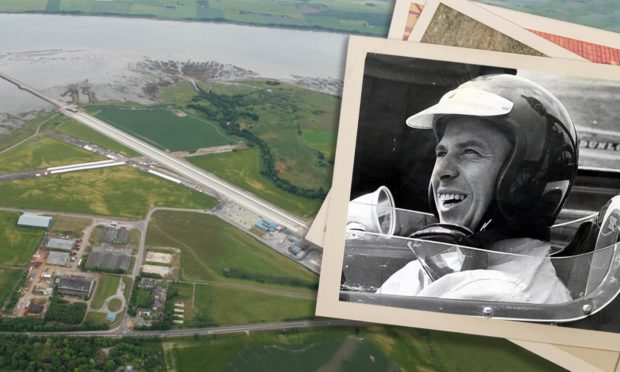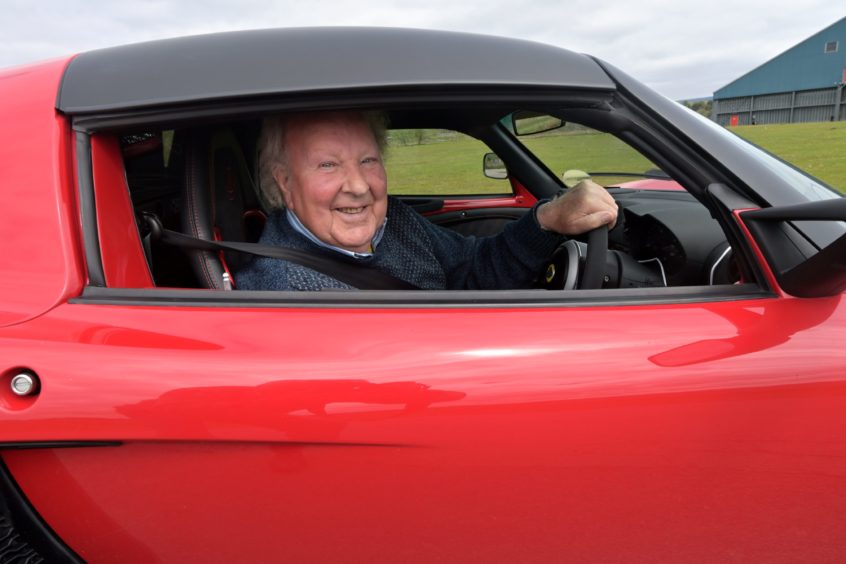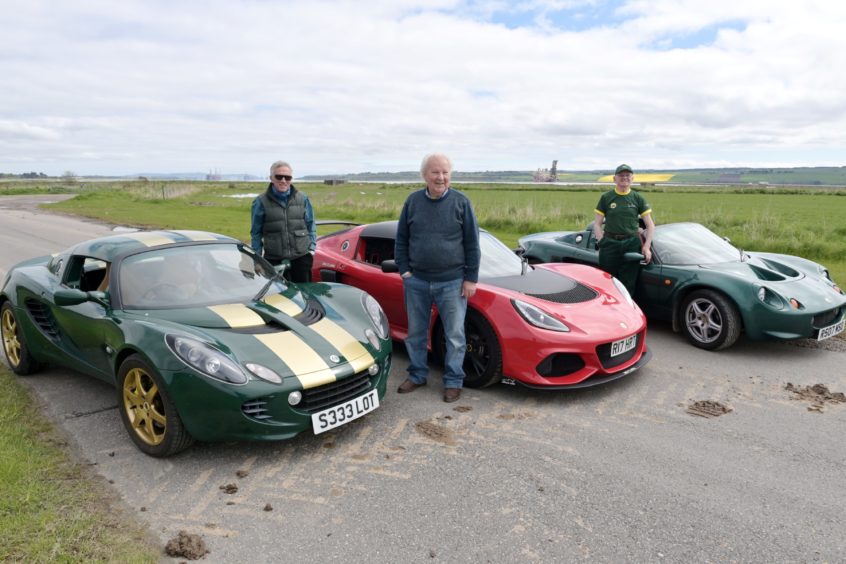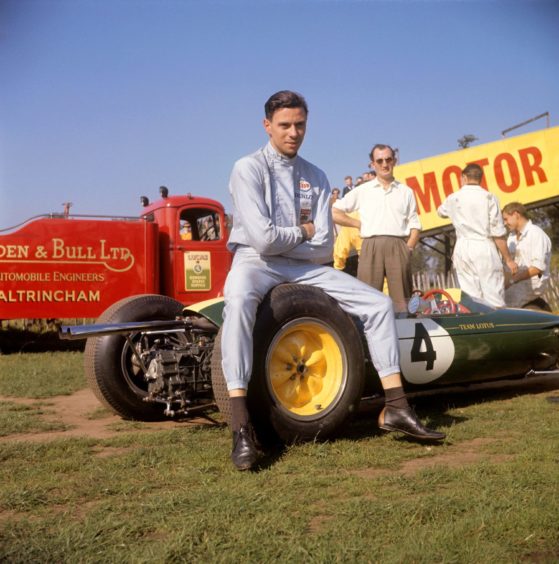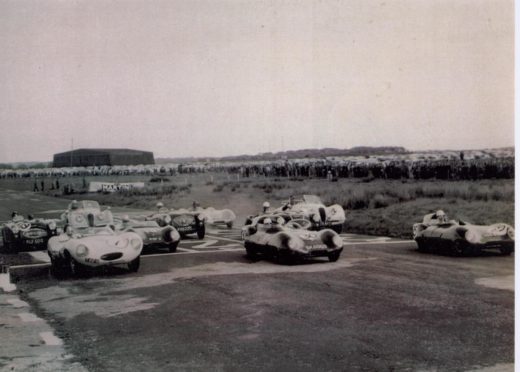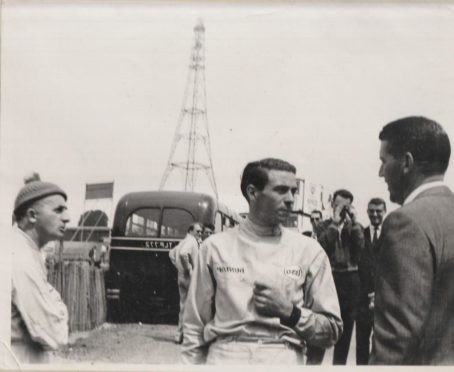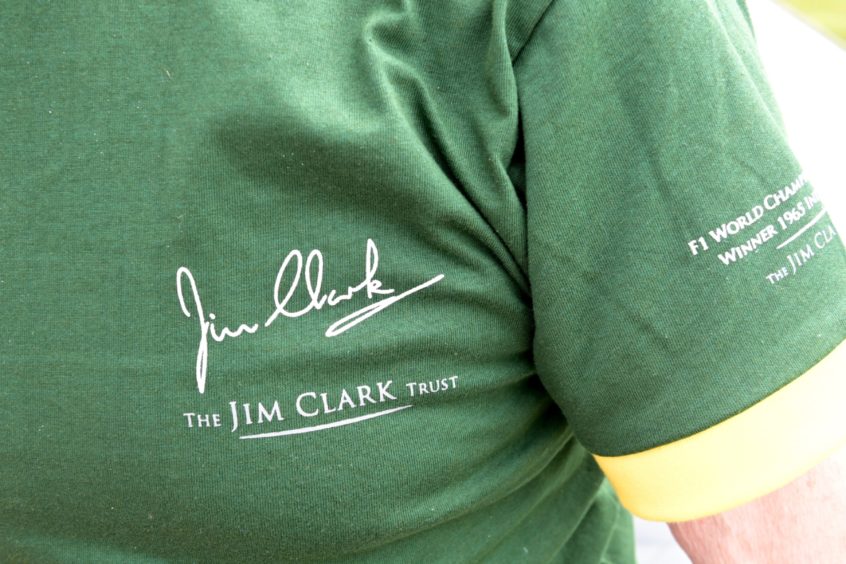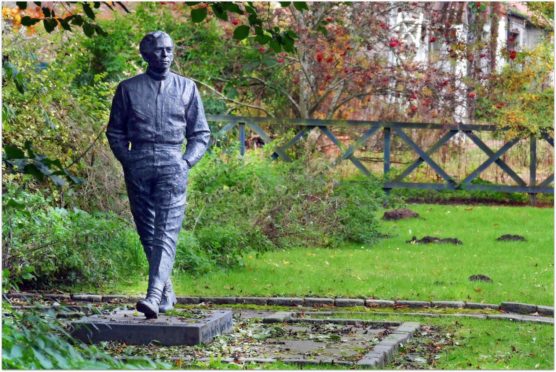Little did sports car-mad Caithness lad Harry Henderson know that the day he went to Evanton airfield to watch his local hero Jimmy Mackay on the track he’d also witness the man who was to become the world’s greatest racing driver.
Fife-born Jim Clark came to Evanton, near Dingwall on several occasions to cut his racing teeth, well out of sight of his worried and disapproving parents in the Borders.
Harry, now 80, was there on two of those occasions, and remembers being blown away by Clark’s technique.
Sitting in his Lotus Exige on the edge of the old track, Harry reminisced about seeing Jim Clark driving a D type Jaguar at Evanton in the early Fifties.
“My father was interested in motor sport and we were supporting Jimmy Mackay from Scrabster, who unknown to us at the time was a friend of Jim Clark,” he said.
“We went down and were watching Jimmy Mackay go race and we didn’t realise it was Jim Clark as well at the time until after the race.
“We still didn’t know anything about him.
“Jimmy Mackay and Jim Clark were different altogether to the rest of the drivers.
“You could see the skill, and one thing in particular- there was a track across the road and they used to change gears in that particular spot to take the weight off the transmission, where others would maybe break down.
“He was very smooth. Even when I watched him I realised he was one of the best drivers in the world, streaks ahead of anyone else.
“We hadn’t really heard of him and didn’t know what he was like, but when we saw him we knew he was something special.
“That’s what made him great, that and the partnership with Colin Chapman, the founder of Lotus cars.”
Harry remembers how Jim Clark lapped Ingliston track in a milk cart only two weeks after winning the British Grand Prix in 1965.
By way of a quirky stunt, at a meet sponsored by the Milk Marketing Board, a number of drivers, including Jim Clark and Jackie Stewart were invited to cover one lap in electric milk floats, stopping to pick up milk bottles on the way.
Harry said: “He was the greatest, he did a lot of races in a short life.”
Harry is a member of the Beauly Sports Car Club, set up last year by Gil Graham and and James Campbell, confirmed Jim Clark fan and Lotus Elise owner.
James, 84, followed racing driver Juan Manuel Fangio in the fifties, and heard Fangio quoted as describing Jim Clark as the greatest racing driver ever.
He joined Harry at the edge of the old track in Evanton to reminisce.
James said: “Coming from a man like that, who I always thought was the greatest racing driver ever, was quite something.
“It was Clark’s natural ability, and the fact that he could race anything, his first race was a DKW saloon car, it didn’t matter what he was racing, there was something about him, his natural ability shone through.
“Colin Chapman recognised his great ability because Innes Ireland, who was the Lotus number one driver was asked to step aside to make way for Jim Clark and that didn’t please Innes Ireland very much.”
On the starting grid with Jim Clark
Meanwhile Harry’s latter day hero Jimmy Mackay quite often found himself on the starting grid next to Jim Clark.
Jimmy was the owner of the Scrabster Hotel in Thurso and was busy building it up during the 60s.
He got his racing career off to a good start in the late 1950s, coming first in three heats and handicap races at Charterhall in 1955 and 1956 driving a Lotus Mark VI.
By 1958 he was driving a Lotus Eleven, with a notable highlight coming in 1961 when he won Roskilde Grand Prix in Denmark.
Jimmy’s granddaughter Suzanne Mackintosh describes him as “quite a character, always on the go, worked and played hard – but most of all he was a family man.”
She recalls his experience at Roskilde in 1962: “Pop broke the sports car lap record held at the time by Stirling Moss, then crashed the car on the next lap as ‘he was trying too hard’.
“He had a lot of success, but also had a few bad days too.”
By 1965 he had paired up with driver Hugh Shannon.
Suzanne said: “Pop and Hugh Shannon made a formidable team.
“They worked well together as they were good friends and had a lot of respect for each other, sharing the same values.
“Both had a strong desire to compete and of course, to win.
“Hugh Shannon relied on Pop to tell him how the car was performing and Pop relied on Hugh to set the car up for each race – Hugh continuing to issue instructions on the grid.
“All modifications were made and fitted by Hugh and they quite often had to drive the Lotus XI to races to get the car ‘run in’ and checked after any modifications or repairs.”
Evanton airfield past and present
The airfield was established in 1922 initially known as Novar or Newton of Novar airfield.
By 1937 it had massively expanded and became RAF Evanton, training pilots in
flying and gunnery.
More expansion followed in 1943 when it became a Class B repair yard and in 1944 the Navy assumed sole possession, and the airfield was renamed
H.M.S. Fieldfare.
After the war the camp briefly held displaced persons, and in 1955 was
leased to the U.S. Airforce, who used it to launch spy balloons.
But this was a failure and resulted in the sale of buildings and
fittings with many buildings destroyed and used as sea defences.
Nowadays it’s a large industrial estate.
Jim Clark tragically lost his life aged 32
Jim Clark’s untimely death at Hockenheim on April 7 1968 shocked the racing world and those fans and friends who knew him as a shy, retiring true gentleman who preferred to be described as a farmer first and foremost.
He was competing in a Formula 2 race during a break in the Formula 1 season.
In wet conditions, his Lotus 48 in gold leaf livery left the track at over 150 mph, somersaulted and collided with a tree, killing him instantaneously.
He was 32.
The Jim Clark Trust records it thus: “Colin Chapman and his team mate Graham Hill were devastated.
“The world was shocked by his death.
“Jim was considered to be one of the safest, most skilled and naturally gifted drivers and his peers did not think that driver error had caused the crash.
“A deflated rear tyre was widely blamed and accepted as the cause for the incident.
“Hill would go on to claim the Formula 1 World Championship in 1968, which he dedicated to his friend’s memory.
“Fellow racing driver Chris Amon summoned up the sentiments of many others at the time- ‘If it could happen to him, what chance do the rest of us have? I think we all felt that. It seemed like we’d lost our leader.’ “
